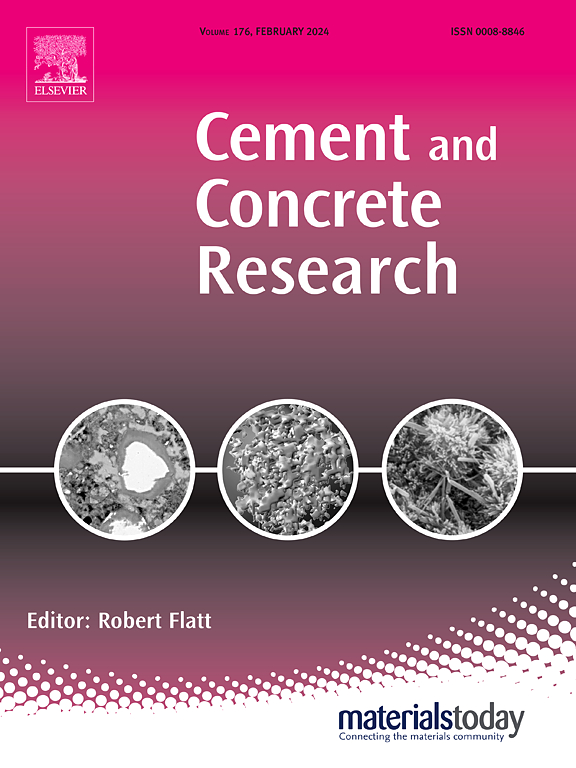Anomalous time-constant on mortar/electrolyte interface and its influence on LPR and EIS measurement of rebar corrosion
IF 13.1
1区 工程技术
Q1 CONSTRUCTION & BUILDING TECHNOLOGY
引用次数: 0
Abstract
Electrochemical impedance spectroscopy (EIS) and linear polarization resistance (LPR) are widely adopted to measure steel/concrete corrosion. However, the variation in electrode configurations often lead to inconsistent results. In this study, different reference electrode (RE) and counter electrode (CE) configurations were adopted on the same steel/mortar specimen to investigate their influence on EIS and LPR. A ghost time-constant (GTC) was validated on the mortar/electrolyte (M/E) interface at 30–220 Hz in EIS when CE and RE are both in the external electrolyte. In the past, this GTC has often been misunderstood corresponding to iron oxides. This M/E interface, with thickness of several nm to several μm, is necessary to completing the equivalent electric circuit model (EECM). Neglecting this M/E interface interference can result in overestimating the passive film thickness by >9 times in EIS, as well as introducing a 75 % error in the corrosion current density icorr.
砂浆/电解质界面异常时间常数及其对钢筋腐蚀LPR和EIS测量的影响
电化学阻抗谱(EIS)和线性极化电阻(LPR)被广泛用于钢/混凝土腐蚀的测量。然而,电极结构的变化往往导致不一致的结果。本研究在同一钢/砂浆试样上采用不同参比电极(RE)和对电极(CE)配置,考察其对EIS和LPR的影响。在EIS中,当CE和RE均处于外部电解质中时,在30-220 Hz范围内验证了砂浆/电解质(M/E)界面上的幽灵时间常数(GTC)。过去,这种GTC常被误认为是氧化铁。这种厚度在几nm到几μm之间的M/E接口是完成等效电路模型(EECM)所必需的。忽略M/E界面干扰会导致EIS中钝化膜厚度高估9倍,并且在腐蚀电流密度计算中会产生75%的误差。
本文章由计算机程序翻译,如有差异,请以英文原文为准。
求助全文
约1分钟内获得全文
求助全文
来源期刊

Cement and Concrete Research
工程技术-材料科学:综合
CiteScore
20.90
自引率
12.30%
发文量
318
审稿时长
53 days
期刊介绍:
Cement and Concrete Research is dedicated to publishing top-notch research on the materials science and engineering of cement, cement composites, mortars, concrete, and related materials incorporating cement or other mineral binders. The journal prioritizes reporting significant findings in research on the properties and performance of cementitious materials. It also covers novel experimental techniques, the latest analytical and modeling methods, examination and diagnosis of actual cement and concrete structures, and the exploration of potential improvements in materials.
 求助内容:
求助内容: 应助结果提醒方式:
应助结果提醒方式:


